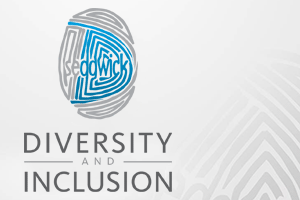
It’s no secret that acquisitions have been part of Sedgwick’s growth strategy in recent years. I joined Sedgwick through the acquisition of my previous employer in 2011 and was on the task force dedicated to integrating the two companies.
When one organization decides to acquire another, it’s an exciting yet challenging time for both parties. In order for an acquisition to be truly worthwhile and successful, it must be handled in a way that maximizes the benefits of the two organizations joining forces.
Colleague retention is key
An acquisition is not just about increasing market share, improving financial performance, or obtaining new technology. Rather, the top priority is retaining the acquired organization’s most treasured asset: its people, whose knowledge, abilities and established relationships are immeasurably valuable. After an acquisition, it’s natural to get immersed in the financials, technology and business integration processes. However, we know that getting real value out of an acquisition and expanding the company’s customer base hinge on retaining those new colleagues and preserving the business relationships they bring with them.
After an acquisition, the combined organization becomes more diverse in many ways including in the diversity of thought. The major challenges can often include how best to maximize that talent, maintain colleague satisfaction, manage the population mix, and leverage the newly expanded team to realize the best outcomes for everyone.
Making a good first impression
Unlike most new colleagues, those who join a company through an acquisition don’t change employers by choice. They are left to process the fact that they’ve become part of a different organization. Without a doubt, they will have questions about how the change affects the way they’re used to doing things and what is expected of them with regard to workload, productivity and more.
To successfully tackle the challenges outlined above, acquiring companies must be empathetic to their new colleagues, ask for their input and ensure they are integrally involved in decision-making processes from Day 1. Maximizing a return on acquiring those colleagues is completely tied to making sure they feel included – it’s a critical part of the process and best to do sooner rather than later.
I have been on both sides of acquisitions during my career. Like any change management process, each step in combining two organizations must be approached strategically. Whether it’s onboarding the new colleagues, integrating technology platforms, or communicating with clients about the transition, the concerns and fears of all involved must be given serious consideration. Change is hard, especially when it comes to something as important as your colleagues’ jobs and the work they do every day.
When my previous employer was acquired by Sedgwick, I worked with fellow members of the acquisition task force to assist colleagues during the transition. Sedgwick hosted presentations to introduce the two companies, held in-person meetings with company executives, and coordinated several other efforts to support communications. Acknowledging colleagues’ anxieties and addressing concerns at the outset goes a long way in ensuring the long-term success of the combined organization. In addition, providing constant updates throughout the onboarding process ensures all colleagues understand their roles and how they can contribute.
Post-acquisition, there is a natural emphasis on transitioning the acquired company’s clients as seamlessly as possible and providing an “A+” experience for the customer in order to retain the business. The same emphasis must be placed on providing colleagues with a great experience from the get-go in order to retain their talent. A strong partnership between the two organizations, one that’s built on mutual respect and the “common good,” will yield the best results, especially when both teams clearly communicate their expectations, roles and responsibilities and perform their parts well.
Bringing together colleagues from different organizations is not just a human resources issue. Cultural integration and embracing diversity and inclusion are true business imperatives, and multiple departments must step up and take ownership of these organizational responsibilities in the aftermath of an acquisition.
Fostering synergy
A critical part of the integration process includes helping new colleagues understand the acquiring company, its culture and their unique role in its continued growth. However, that does not mean simply inculcating them in “the way we do things here” and dispensing with all of the knowledge they bring to the table. Downplaying the value of their skills and the acquired organization’s established processes can have very negative consequences for morale and for the business.
In my experience, I’ve found that it’s helpful to start with an assessment of both companies to find the areas where they are similar, such as practices or values, and build upon them. There may also be effective internal or external processes unique to the company being acquired that could add value to existing operations. The combined team must find ways to capitalize on the best aspects of each organization’s culture.
Of course, the necessary steps must be taken to preserve existing customer relationships. If the organizations joining forces were previously competitors, keep in mind that the customers of the acquired company made a conscious decision to do business with them, rather than with the acquiring organization. It would be foolish not to leverage the strengths those customers saw in that organization. Preserving established business relationships can minimize client disruptions, and the combined organization can take advantage of—and continue to build on—the history and hard work of the acquired organization.
Acquisitions present unique opportunities for learning from one another and becoming better together. Both parties must approach the integration process from a stance of mutual respect and an appreciation of the diversity of thought that’s enriched by the expanded population mix. It’s certainly a challenge to strike a balance of old and new in establishing practices that work best for clients, but when an acquisition is carried out successfully, the whole is always greater than the sum of its parts.
Marwan Shiblaq, managing director, disability operations
Sedgwick